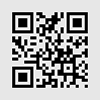
6
- For the preparation of food to be frozen, please con-
sult
a specialized manual.
- Food that has be thawed, even partially, must not be re-
frozen: you must cook it in order to consume it (within 24
hours) or to freeze it once again.
- Fresh foods that you intend to freeze must not be placed
in contact with those that are already frozen or those that
have been fast-frozen. Rather, they must be placed on atop
the grate in the freezer compartment, in contact with the
walls of the compartment (back or side) if possible. Please
keep in mind that proper conservation of frozen foods de-
pends on the speed
with which they are frozen.
- During the freezing process, avoid opening the door of
the freezer.
- The maximum daily quantity of food that can be frozen is
indicated on the rating plate located to the left of the veg-
etable crisper.
- In order to freeze and then thaw foods optimally, it is rec-
ommended that you divide food into small portions so that
they freeze quickly and uniformly. The packages should be
clearly marked with the content and the date they were
frozen.
- Do not open the freezer door in the event of a power
failure or malfunction. This precaution will slow the rise in
temperature within the compartment. If the door is not
opened, frozen and fast-frozen foods will remain in their
current state for approximately
1
7 hours.
- Do not place full bottles in the freezer: they could easily
burst because all liquids increase in volume when they
freeze.
-If the ambient temperature remains below
1
4°C for an
extended period of time, the temperature needed for ex-
tended
storage of food in the freezer will not be reached,
resulting in reduced storage life of the food.
-Fill the ice container so that they are no more indication of
line.
- Install the Appliance Properly
In other words, away from sources of heat and direct sun-
light, in a well ventilated room complying with the mini-
mum distances indicated in the paragraph entitled, “ Instal-
lation/ Ventilation.”
- Use the Right Temperature Setting
A setting which is too cold increases energy consumption.
- Do not Overfill
To conserve food properly, the cold air must circulate
freely within the refrigerator. If it is overfilled, this will
prevent proper air circulation, forcing the compressor to
work continuously.
- Close the Doors
Open your refrigerator as little as possible because each time
you do so you loose much of the cold air. To raise the tem-
perature to the proper level again, the motor must work for a
long time, consuming energy.
- Keep an Eye on the Seals
Keep the seals clean and make sure that they adhere well to
the door. This alone will ensure that no cold air escapes
- No Hot Foods
A hot pot or pan placed in the refrigerator immediately
raises the temperature by several degrees. Let hot cookware
and food cool to ambient temperature before placing them in
the refrigerator.
Freezing Foods Properly
Tips on Saving Energy
